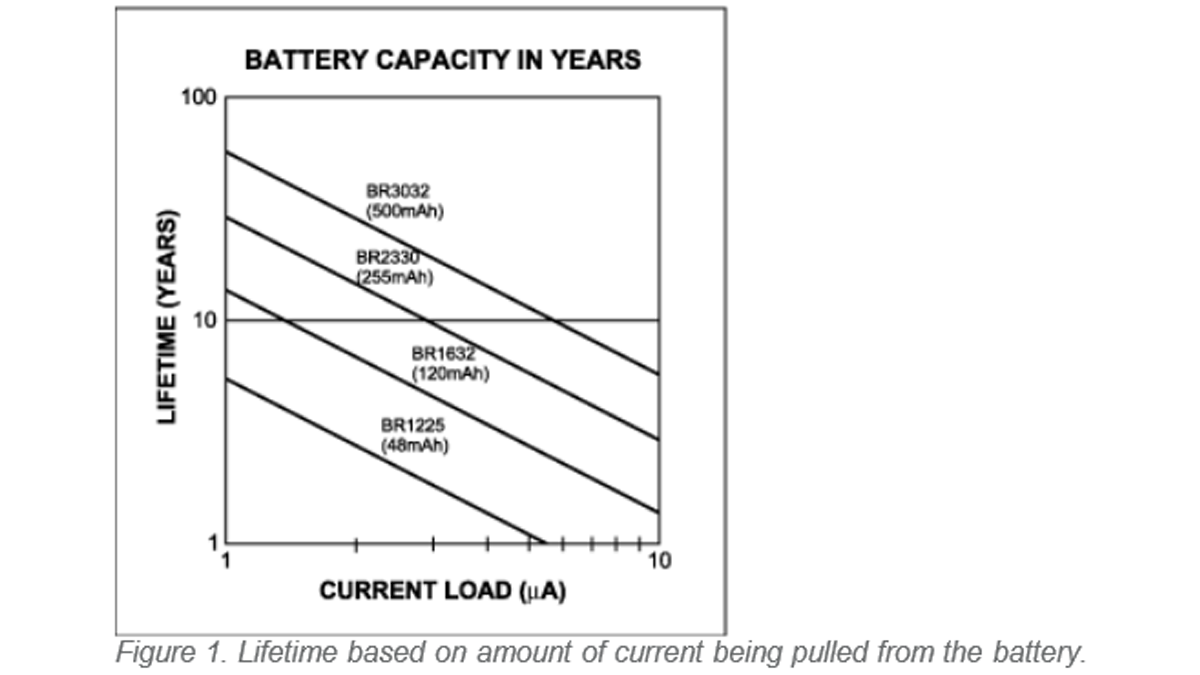Abstract: The typical specification for lithium coin-cell batteries has been to provide a 10-year battery
lifetime in the absence of system power. End users should evaluate the anticipated lifetime in their
specific application, especially for those that exceed typical commercial environments or that need to last
more than 10 years. This article gives the reader an overview of the major factors affecting the lifetime
of an IC that can be powered by either the system power or a lithium battery for a backup supply.
Maxim builds a large number of products that incorporate lithium coin-cell batteries to provide nonvolatile
(NV) memory or real-time clock (RTC) functionality in the absence of system power. The typical
specification for these products has been to provide a 10-year battery lifetime in the absence of system
power. Because of end-application uncertainties, the lifetime prediction is conservative.
End users should evaluate the anticipated lifetime in their specific application, especially for applications
that exceed typical commercial environments or that need to reach lifetimes beyond 10 years. An
understanding of the reliability model is also beneficial for users opting to purchase discrete battery
controllers and combine them with a battery, rather than purchasing the module product containing the
controller and battery. This article gives the reader an overview of the major factors affecting the lifetime
of an integrated circuit (IC) that can be powered by either the system power or a lithium battery for a
backup supply.

Why Battery Backup?
There are several alternatives for data retention while the system is powered off. Battery-backed SRAMs
are a reliable alternative when the read-write speed or number of cycles is important. Flash or EEPROM
also provide NV data storage, but at the cost of simplicity or speed. The major disadvantage of battery-
backed SRAM is that the battery is a consumable. Therefore, the product selection must consider the
available charge within the battery to determine the end product’s lifetime. For devices that need to
maintain time in the absence of system power, some form of electrical energy needs to be available to
maintain a crystal oscillator. This current demand is well suited to being maintained by a battery.
For more detail: Lithium coin-cell batteries Predicting an application lifetime
